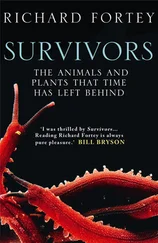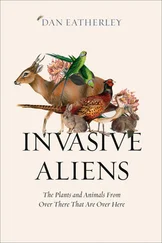Andrew H. Cobb - Herbicides and Plant Physiology
Здесь есть возможность читать онлайн «Andrew H. Cobb - Herbicides and Plant Physiology» — ознакомительный отрывок электронной книги совершенно бесплатно, а после прочтения отрывка купить полную версию. В некоторых случаях можно слушать аудио, скачать через торрент в формате fb2 и присутствует краткое содержание. Жанр: unrecognised, на английском языке. Описание произведения, (предисловие) а так же отзывы посетителей доступны на портале библиотеки ЛибКат.
- Название:Herbicides and Plant Physiology
- Автор:
- Жанр:
- Год:неизвестен
- ISBN:нет данных
- Рейтинг книги:5 / 5. Голосов: 1
-
Избранное:Добавить в избранное
- Отзывы:
-
Ваша оценка:
- 100
- 1
- 2
- 3
- 4
- 5
Herbicides and Plant Physiology: краткое содержание, описание и аннотация
Предлагаем к чтению аннотацию, описание, краткое содержание или предисловие (зависит от того, что написал сам автор книги «Herbicides and Plant Physiology»). Если вы не нашли необходимую информацию о книге — напишите в комментариях, мы постараемся отыскать её.
Discover the latest developments in herbicide and weed biology Herbicides and Plant Physiology,
Arabidopsis
Herbicides and Plant Physiology
Herbicides and Plant Physiology — читать онлайн ознакомительный отрывок
Ниже представлен текст книги, разбитый по страницам. Система сохранения места последней прочитанной страницы, позволяет с удобством читать онлайн бесплатно книгу «Herbicides and Plant Physiology», без необходимости каждый раз заново искать на чём Вы остановились. Поставьте закладку, и сможете в любой момент перейти на страницу, на которой закончили чтение.
Интервал:
Закладка:
1 The global food challenge. To some, the continuing expansion of the human population will inevitably outstrip the growth of our food supply, resulting in global starvation. To others, an expansion of arable land, a growing global food trade and the increases in crop yield predict a more optimistic future. Yet is it inevitable that a growing food supply will continue to meet demand?
2 The problem. More than half the global population will suffer some form of malnutrition by 2030 unless urgent action is taken to increase access to food of high nutritional quality. The Food and Agriculture Organization of the United Nations (FAO et al., 2017) estimated that 815 million persons were hungry in 2016 (11% of the global population), an increase of 35 million since 2015. While 155 million children have stunted growth owing to poor nutrition, 2 billion persons suffer from hunger, while 1.9 billion adults and 41 million children are either overweight or obese. In addition, the human population is expected to grow by about 80 million per annum to an estimated 10 billion in 2050 (Oerke and Dehne, 2004). Furthermore, the global impact of the current covid‐19 pandemic could result in at least a further 200 million undernourished persons. How can we expect to produce 70% more food to feed them all?
3 Food security. Food security is an increasing global problem in the face of climate change, combined with increasing populations and volatile food prices. With the global population growing at 230,000 persons each day and 60% of us now living in cities, the pressure on farmers to increase crop yields is ever present. At the same time, in the UK as an example, the land available per head of population has decreased from 0.8 to 0.2 hectares in the last 50 years. Every year 12 million hectares is degraded globally owing to drought, de‐forestation and desertification, an area roughly the size of Nicaragua, the largest country in Central America. Furthermore, global freshwater supply is becoming increasingly limited and unreliable to an estimated 700,000 persons, notwithstanding the fluctuations in weather as a result of climate change. We are experiencing greater extremes of weather, such as flooding or drought, and so we need to use the available fresh‐ and artesian‐water more wisely. This is especially so whether we grow crops or raise animals. For example, it is estimated that 70 litres of water are needed to produce one apple, whereas 15,000 litres are needed for one kg of beefsteak! It is interesting to note that the carbon footprint of beef and lamb is three times that of pork, five times that of chicken, over 30 times that of bread wheat and 50 times that of potatoes. Urbanisation and increasing incomes generate a higher demand for animal protein, yet beef production requires four times more land than dairy, per unit of protein consumed. In addition, beef is seven times more resource intensive than pork and poultry, and 20 times more so than pulses. Not forgetting that animal production results in increased greenhouse gas emissions. It is a further uncomfortable fact that about a third of all food produced never reaches the table. This value is higher for fruit and vegetables, and such losses are even higher in the developing world, owing to the lack of effective storage and/or transport (IFPRI, 2016).As available land for farming is in ever shorter supply and extremes in climate become more evident, many scientists predict an increased degradation of soils and a need for increased attention to land management. In recent years in the UK, for example, farmers have seen above average rainfall with increasing soil erosion, degradation and run‐off. Palmer and Smith (2013) noted that 75% of fields planted with maize or potatoes in the south‐west of England were severely damaged by soil degradation, with one in five sites experiencing serious rill and gully erosion. Some 60% of fields growing winter cereal crops, such as wheat and barley also displayed high to severe soil degradation. Techniques to avoid soil compaction, such as topsoil lifting or sub‐soiling, are options to loosen soil layers, but the use of increasingly large and heavy machinery increases the risk. These authors concluded that soils with good agricultural properties are over‐exploited in crop production and, as a result, can become highly degraded. Conversely, chalk and limestone soils degrade less.A further definitive study, by Challinor et al. (2016), has predicted that gradually rising temperatures in Africa, and more droughts and heatwaves caused by climate change, will have a profound impact on maize yields. Higher temperatures reduce the length of time between planting and harvesting, which results in less time to accumulate biomass and yield. They also predict similar shortening of time to yield for maize crops across the tropics and suggest that maize breeding systems must adapt to increasing temperatures to ensure positive yields in the decades ahead. A further interesting area of research would be to investigate how the major weeds of maize crops may also adapt to increasing growth temperatures, with especial attention to weeds exhibiting C4 photosynthesis.
4 Greater intensification? In a comprehensive and thought‐provoking study, Fischer et al. (2014) concluded that greater crop yields are possible through a greater intensification of agriculture, especially in Sub‐Saharan Africa. This assumes more agricultural research, development and training in the developing world and a more efficient use of inputs, such as plant protection products. What is certain is that global governments will need to invest substantially in agriculture to achieve the yield increases necessary to feed the world. Greater meat consumption and an expanding human population implies that crop productivity needs to double by 2050.
5 Sustainability. One widely used definition of sustainability is ‘meeting the needs of the present without compromising the ability of future generations to meet their own needs’ (DEFRA, UK). Another considers that ‘a sustainable agriculture is ecologically sound, economically viable and socially just and humane’ (Alliance for Sustainability, www.afors.org). How can humankind tackle climate change, reduce population growth, cut out waste, educate consumers in the developed world to eat less, conserve freshwater and eat more plant products and fewer animals? Political awareness, more education and an alert and informed media may provide the answer. Indeed, Ehrlich and Harte (2015) ‘urge policymakers around the world to move the issue of food security to the top of the political agenda’. And they conclude that ‘anything less is a recipe for disaster’.
6 Can organic agriculture feed the world? Regarding crop production, organic practices infer that the use of inorganic crop nutrition products is not allowed, genetically modified crop cultivars are not permitted and the use of chemical plant protection products for the control of pests, weeds and diseases is forbidden. Such practices are becoming widely accepted in the developed world, as they are seen as a more ‘natural’ means of crop production. Those that espouse organic farming practices often say that it is better for the environment, since it requires fewer inputs, but it is generally agreed that organic farming is less productive per hectare than conventional, intensive agriculture. More land would be needed for equivalent yields, and conversion to organic practice would release more organic carbon into the environment. Furthermore, it is doubtful that legume cover crops could replace the nitrogen fertiliser needed to give higher yields (Connor, 2008). Perhaps in the future, nitrogen fixation from the atmosphere will be possible using genetically engineered crop plants?The EU Farm to Fork Strategy, launched on 20 May 2020, has ‘aspirational targets’ for 2030 for a 50% cut in pesticide use and a commitment to dedicating 25% of agricultural land to organic farming. One wonders if the consequences of reduced yields and higher prices, to name but two, have been thought through. Furthermore, the aspiration to replace pesticides with ‘biocontrol agents’ appears idealistic. Although regularly promoted, an agreed definition of biocontrol remains elusive and, at the present time, commercial agents are expensive, are unproven in the field and no viable weed biocontrol methodology exists. At a time of imminent global recession owing to the covid‐19 pandemic, a global scarcity of food is predicted, made worse by plagues of locusts in Africa, Arabia, Iran and Pakistan adding to pressures on food security. Can food producers realistically promote organic agriculture and cut pesticide use in such uncertain times? Instead, can we use our existing practices more effectively?
Читать дальшеИнтервал:
Закладка:
Похожие книги на «Herbicides and Plant Physiology»
Представляем Вашему вниманию похожие книги на «Herbicides and Plant Physiology» списком для выбора. Мы отобрали схожую по названию и смыслу литературу в надежде предоставить читателям больше вариантов отыскать новые, интересные, ещё непрочитанные произведения.
Обсуждение, отзывы о книге «Herbicides and Plant Physiology» и просто собственные мнения читателей. Оставьте ваши комментарии, напишите, что Вы думаете о произведении, его смысле или главных героях. Укажите что конкретно понравилось, а что нет, и почему Вы так считаете.











